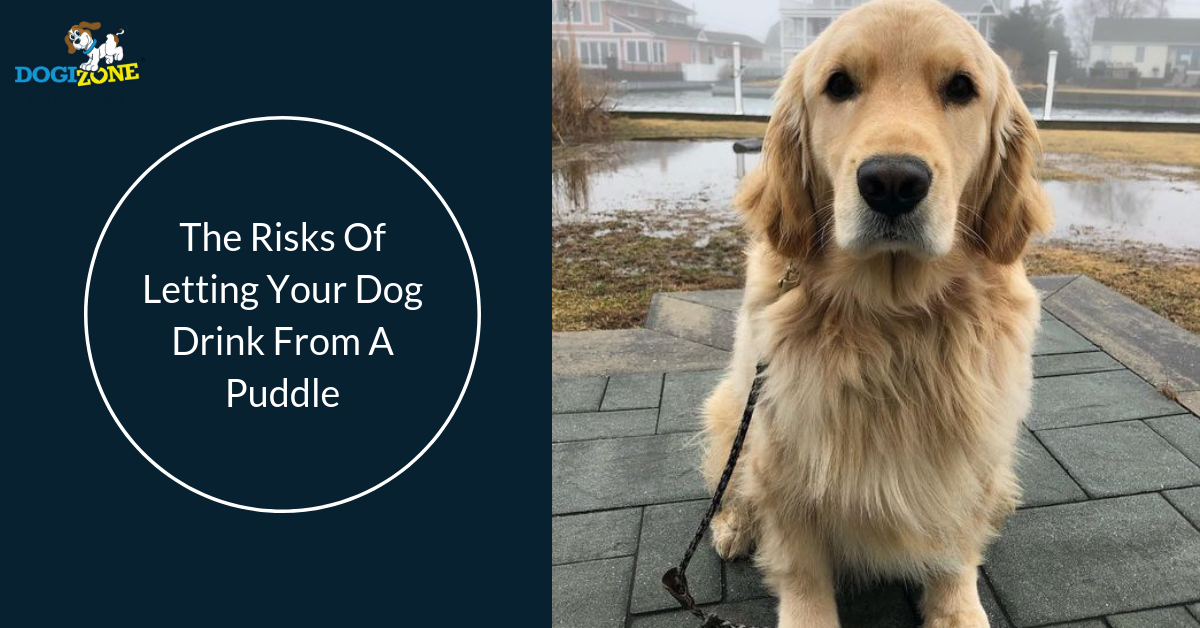The Risks Of Letting Your Dog Drink From A Puddle
Believe it or not there are risks of letting your dog drink from a puddle and we’re going to tell you just exactly what they are. Puddles, ditches, and low lying areas are always attractive to dogs. They seem to love to run through the mud, to roll around in the cool dirt and even to drink the water. However, letting dogs drink from stagnant water in these types of low lying areas can have mild to much more serious health risks for your pooch. 
To help understand the dangers of water in puddles and ditches, here are some of the common issues that dogs in cities or rural areas may be exposed to by consuming this water.
Toxins
In both urban and rural areas, toxins of all types are used as pesticides, herbicides, insecticides, and fungicides. When it rains, or when lawns or fields are irrigated or watered, these chemicals wash off the plants and soil and are carried by the rain and water. When this water collects in low areas, the levels of the toxins can be concentrated, particularly as the water begins to evaporate.
Some dogs may be highly sensitive to this type of exposure. Ingesting these chemicals in drinking water can result in vomiting, stomach upsets, lethargy, tremors, and sometimes rashes on the skin around the mouth, paws or other areas of the body. In high concentrations, any of these chemicals can be life-threatening, and if any symptoms occur, take your dog to a vet immediately.
Antifreeze is another common product that is lethal to dogs and is found on roads, driveways and even in old containers that may be thrown out into the ditches. New types of antifreeze have a bitter tasting product added, but if a dog is thirsty, he or she may still drink water in a roadside puddle that has some of this deadly product. Unfortunately, the permanent and irreversible kidney failure that can occur even with small amounts of ethylene glycol is often fatal.
Leptospirosis
Leptospirosis is caused by organisms that live in wet areas and in water. This bacteria is present in a large number of wild animals, including rodents and even in deer. Farm animals, and in particular in hogs, cattle, and sheep can also harbor and transmit this bacteria.
Any animal that is a carrier of leptospirosis can contaminate standing water sources. This occurs when the animals urinate and the urine, which carries the bacteria, goes into the water source.
The challenge with leptospirosis is that animals that drink the water, including dogs, can become infected very easily. Some will become very sick quite quickly and may experience fatal kidney failure possible problems with the lungs and liver if not treated. Typical early symptoms include vomiting, diarrhea, and loss of appetite. However, not all infected animals show signs of bacterial infection. These dogs and other animals remain carriers and continue to spread the bacteria, particularly in the wet seasons of the year.
It is possible to vaccinate dogs for leptospirosis. Outdoor dogs or those that spend time in outdoor areas hiking, jogging or walking with the family, or dogs that go to dog parks or other places where animals are present may benefit from the vaccination.
There are other issues to consider, as well. Giardiasis is another form of organism that is found in puddles and standing water. It is transferred when contaminated feces contact the water. People, as well as dogs, can become infected with giardia, and they typically experience vomiting and diarrhea.
The good news is that giardiasis can be treated effectively with antibodies. The challenge is often in identifying the reason for the symptoms and choosing the most effective treatment option possible.
Comment on our social media pages. Facebook, Twitter & Instagram.

